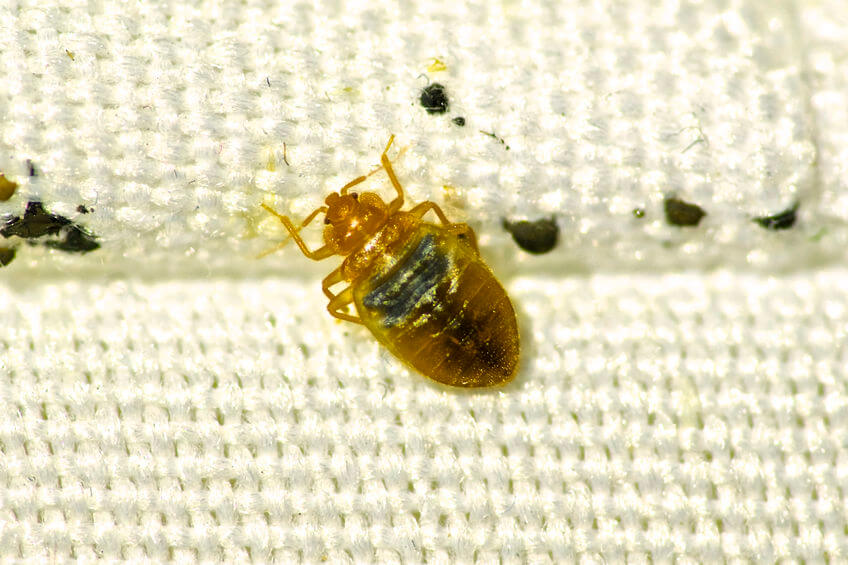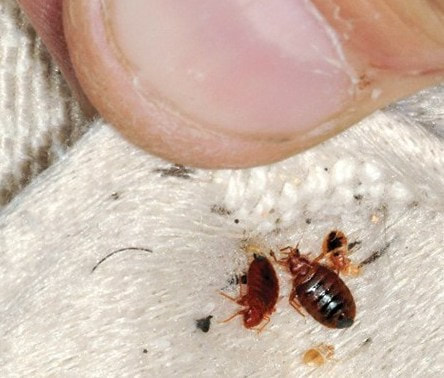Exploring the Science Behind Bed Bug Heat Treatments as a Sustainable Bug Monitoring Method
In the realm of bug management, the mission for sustainable and effective solutions remains a constant search. One such method that has acquired grip in recent years is using warmth therapies to fight bed insect infestations. By harnessing the scientific research behind thermal fatality points for these consistent bugs, warm treatments supply a promising alternative to typical chemical-based strategies. The intricacies of how heat efficiently eliminates bed pests and the more comprehensive effects for sustainable insect administration practices make this a topic worth checking out better.
Bed Pest Warmth Treatment Refine

Thermal Fatality Point for Bed Bugs
Exposing bed bugs to elevated temperature levels beyond their thermal tolerance variety is essential for accomplishing efficient removal in warmth therapy processes. The thermal death point for bed pests describes the temperature level at which these bugs can not survive. Research suggests that bed insects start to die when revealed to temperature levels over 113 ° F(45 ° C) for a continual duration. As the temperature raises, so does the death rate of bed pests. At around 118 ° F(48 ° C ), bed bugs start to die swiftly, with a mortality rate of virtually 99% within minutes of exposure. This demonstrates the level of sensitivity of bed pests to heats and highlights the efficiency of warm therapies in eliminating invasions. By reaching and preserving temperature levels above the thermal death factor for bed insects, insect monitoring professionals can make sure thorough elimination of bed pest populaces, consisting of hard-to-reach areas where chemical treatments may be much less reliable. Comprehending the thermal death factor for bed insects is essential for implementing successful warmth therapy approaches and accomplishing lasting bug monitoring end results.
Benefits of Warmth Treatments
Having established the important thermal death point for bed pests, it is important to now check out the considerable advantages that warm treatments use in efficiently eliminating these durable parasites. One of the main advantages is that warmth can pass through deep right into holes and splits where bed bugs hide, making sure that also the most hard-to-reach areas are heated up to dangerous temperature levels.
In addition, warm treatments are ecologically friendly and non-toxic, making them a lasting parasite administration approach. Unlike chemical pesticides, heat treatments do not leave harmful residues that can pose threats to human wellness or the atmosphere. This element is especially crucial in delicate atmospheres such as hospitals, schools, and residential areas where chemical use might not be preferable.
In addition, warm treatments have a high success rate in eliminating bed pest infestations in a single therapy, reducing the need for several visits and lessening interruption to occupants. This effectiveness not only conserves money and time but also gives comfort to those dealing with bed bug issues.
Efficiency of Warm Treatment

Warm therapies have the added advantage of eliminating bed pest eggs, which are often immune to typical chemical treatments. Overall, the effectiveness of warmth treatments in eradicating bed pest infestations makes them a reliable and lasting parasite administration approach.
Lasting Bug Monitoring Conveniences
Implementing lasting insect management methods uses long-term advantages for both the environment and public health and wellness. By using techniques such as warm treatments for insect control, we can lower the dependence on harmful chemical pesticides that can have adverse results on communities and human wellness - DC exterminator. Sustainable parasite administration techniques assist in protecting biodiversity by targeting specific insects without hurting non-target microorganisms, thus preserving a well balanced ecosystem
In addition, lasting pest management techniques contribute to the general wellness and wellness of the public. By decreasing exposure to toxic chemicals utilized in conventional pest control methods, heat therapies provide a more secure choice for bug management in household, industrial, and public rooms. This decrease in chemical use likewise helps in protecting against chemical residues from polluting air, soil, and water, guarding ecological high quality.
Conclusion
Finally, bed bug warm therapies have been revealed to be a effective and lasting pest administration approach. The thermal fatality factor for bed insects makes them vulnerable to warmth therapies, which have numerous advantages over conventional chemical treatments. The efficiency of warmth therapies in removing bed pest infestations while reducing ecological effect highlights the capacity of this approach as a sustainable remedy for insect control.
The bed insect heat treatment procedure involves increasing the temperature level within plagued locations to a level that properly gets rid of bed pests and their eggs. By getting to and preserving temperatures above the thermal fatality point for bed bugs, parasite management experts can make sure extensive elimination of bed pest populations, including hard-to-reach locations where chemical therapies might be less efficient. One of the primary benefits is that warmth can penetrate deep right into cracks and holes where bed pests conceal, ensuring that even the most hard-to-reach locations are heated up to lethal temperatures. Unlike chemical therapies that may leave behind immune populaces, warmth therapies offer a safe and eco pleasant service that can penetrate deep into furnishings, wall surfaces, and various other hard-to-reach areas where bed bugs conceal.
The thermal death point for bed bugs makes them susceptible to heat therapies, which have countless benefits over traditional chemical treatments.